Butterfly gardens are a beautiful addition to any outdoor space, providing a haven for these delicate pollinators. Incorporating nectar-rich plants can create a vibrant garden that supports local butterfly populations and enhances your landscape’s aesthetic appeal. This blog will guide you on attracting butterflies to your British Columbia garden, offering examples of specific plants and garden design and maintenance tips.
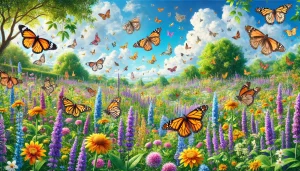
Why Butterfly Gardens Matter
Butterfly gardens are not just visually appealing but crucial in supporting essential pollinators. Butterflies help pollinate various plants, contributing to the health of ecosystems and the production of fruits and vegetables. By creating a butterfly-friendly garden, you are supporting biodiversity and promoting a healthy environment.
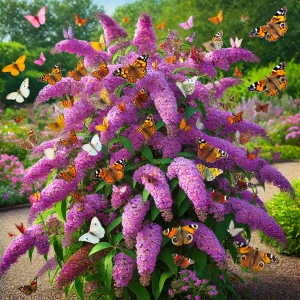
Nectar-Rich Plants for Attracting Butterflies
To attract butterflies, it’s essential to plant flowers that provide a rich source of nectar. Here are some examples of nectar-rich plants that thrive in British Columbia and attract local butterfly species:
- Milkweed (Asclepias spp.): Essential for monarch butterflies, milkweed provides both nectar and a place for monarchs to lay their eggs.
- Lavender (Lavandula spp.): Known for its fragrant flowers, lavender attracts various butterflies, including the Painted Lady.
- Butterfly Bush (Buddleja spp.): As the name suggests, butterfly bushes are magnets for butterflies, offering abundant nectar.
- Echinacea (Echinacea purpurea): Also known as coneflowers, these hardy plants attract butterflies and other pollinators with their vibrant blooms.
- Asters (Symphyotrichum spp.): Asters provide late-season nectar, supporting butterflies preparing for migration or overwintering.
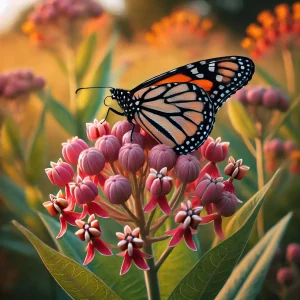
Native Butterfly Species
In British Columbia, you can attract a range of native butterfly species by planting the right flowers. Some species to look out for include:
- Western Tiger Swallowtail (Papilio rutulus)
- Monarch (Danaus plexippus)
- Painted Lady (Vanessa cardui)
- Anise Swallowtail (Papilio zelicaon)
- Lorquin’s Admiral (Limenitis lorquini)
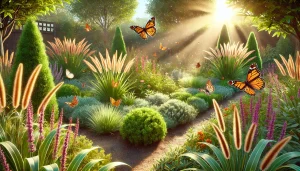
Designing Your Butterfly Garden
Creating a butterfly-friendly garden involves more than just planting nectar-rich flowers. Here are some tips to maximize butterfly attraction:
- Sunlight: Butterflies are cold-blooded and rely on the sun to warm up. Ensure your garden has plenty of sunny spots.
- Shelter: Plant shrubs and tall grasses to provide shelter from the wind and places for butterflies to roost.
- Water: Include a shallow water source, such as a birdbath with stones for butterflies to perch on.
- Avoid Pesticides: Pesticides can harm butterflies and other beneficial insects. Opt for organic gardening methods to keep your garden safe.
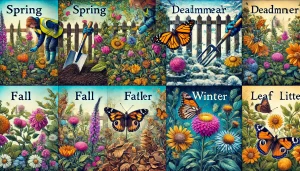
Year-Round Maintenance
Maintaining a butterfly garden year-round ensures that butterflies have a continuous habitat. Here are some tips for each season:
- Spring: Start planting nectar-rich flowers and maintain milkweed plants for monarchs.
- Summer: Deadhead flowers to encourage more blooms and keep the garden vibrant.
- Fall: Plant late-blooming flowers like asters to provide nectar as butterflies prepare for migration.
- Winter: Leave some leaf litter and dead plant stems to provide overwintering sites for butterfly eggs, larvae, and pupae.
Creating a butterfly garden in British Columbia is a rewarding endeavour that supports local ecosystems and adds beauty to your outdoor space. You can attract and sustain various butterfly species by planting nectar-rich flowers, providing essential resources, and maintaining your garden year-round. Embrace the beauty and ecological benefits of a butterfly garden today!